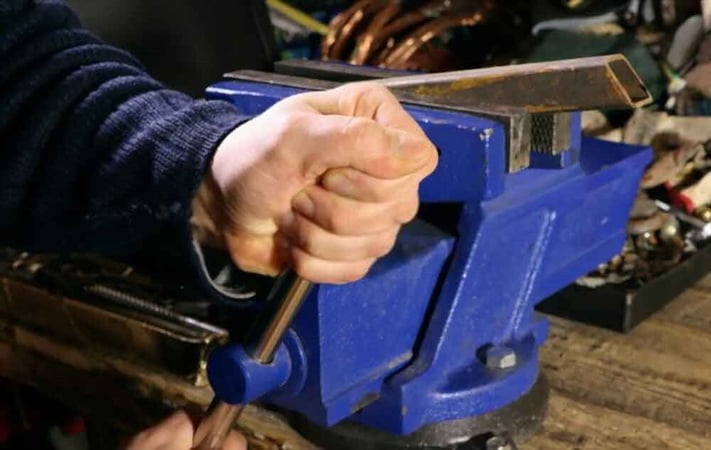A vise is an essential instrument in carpentry and metalworking applications. Bench vises of different types can be attached directly to a workbench to hold the work piece during particular activities, for example, sawing, arranging, and drilling.
This device is versatile whether you are working with metal, wood or any other materials. It offers stability you need to get the job done with so much creativity and accuracy. Bench vise uses are numerous, and amongst all the features it comes equipped with directly from the company, several carpenters and woodworkers have also developed their own special way. So if you want to know all the different bench vise uses and more, keep reading.
Bench Vise Uses

This device comprising of two parallel jaws for holding a workpiece; one of the jaws is settled and the other portable by a screw, a lever, or a cam. It is used for holding a workpiece amid hand tasks, for example, filing, sawing, gluing, or hammering, the vise can be forever bolted to a bench. There are various types namely;
- Engineer’s Vise (Metalworking)
- Woodworking
- Vacuum
- Clamp-on
- Pipe
- Machine
CLOSE ALL
What should I know about using a vise?
A vise, sometimes called the third hand, is an indispensable tool in the tool room or workshop. Vises are usually mounted on workbenches or similar firm supports to hold material in place.
Most vises can be used for a wide variety of work. Select the most suitable vise which is strong enough for the work.
- Wear safety glasses or goggles, or a face shield (with safety glasses or goggles) when using striking tools or power tools on a workpiece held by a vise.
- Attach a vise securely. Place bolts in all the holes in the base of the vise. Use lock washers under the nuts.
- Mount a vise so that the stationary jaw projects slightly beyond the edge of the workbench. This allows long work to be clamped in the vise without interference from the edge of the workbench.
- Ensure that the workbench is firmly secured to its base.

- Check the vise for cracks or other damage before clamping a workpiece in it.
- Use a vise large enough to hold the work without strain.
- Place the workpiece in the vise so that the full clamping surface of the jaw supports the workpiece
- Keep the workpiece in the vise close as possible to the jaws to prevent vibration when sawing, filing, etc.
- Support the end of extra long work with an adjustable stand, saw horse, or box rather than putting extra strain on the vise.
- Keep all threaded and moving parts clean, oiled and free of chips and dirt.
- Use jaw liners in a vise where there is any possibility of marking the work.
- Replace a bent handle and worn jaw inserts.
What should I not do?
- Do not weld the base of the vise to any metal.
- Do not repair a vise by welding or brazing.
- Do not try to bend a heavy rod in a light vise.
- Do not cut into the jaws.
- Do not apply heavy pressure at the corner of the vise jaws.
- Do not use a handle extension (e.g., a pipe) for extra clamping pressure.
- Do not hammer on the handle to tighten beyond hand pressure.
- Do not use the jaws of the vise as an anvil.
- Do not use any vise that has the slightest crack.
- Do not unscrew or open the jaws of the vise wider than they were designed to be used.

